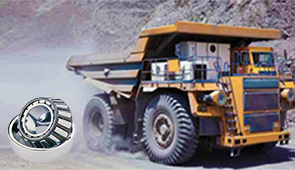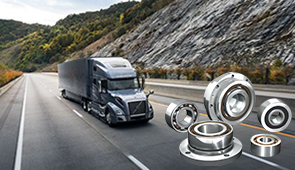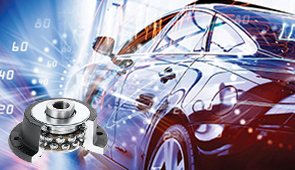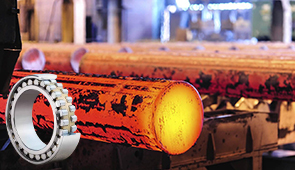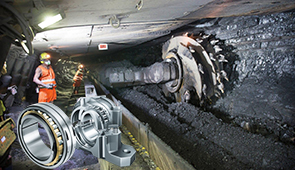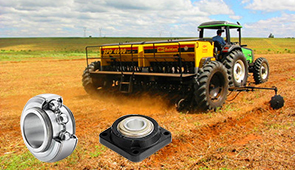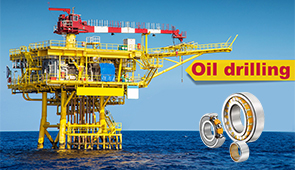Top 5 Reasons Why Wheel Bearings Fail: Understanding Bearing Failure Causes
Wheel bearings are an essential part of any vehicle, ensuring smooth wheel movement and contributing to overall driving safety and performance. However, even with their durable construction, wheel bearings can fail over time, leading to serious issues like reduced efficiency, compromised vehicle control, or potential safety hazards. This blog aims to shed light on the top five reasons why wheel bearings fail, helping readers identify the root causes of these problems. By understanding these failure points, you can take informed steps to maintain your vehicle’s reliability and safety on the road.
What impact does corrosion have on wheel bearings?
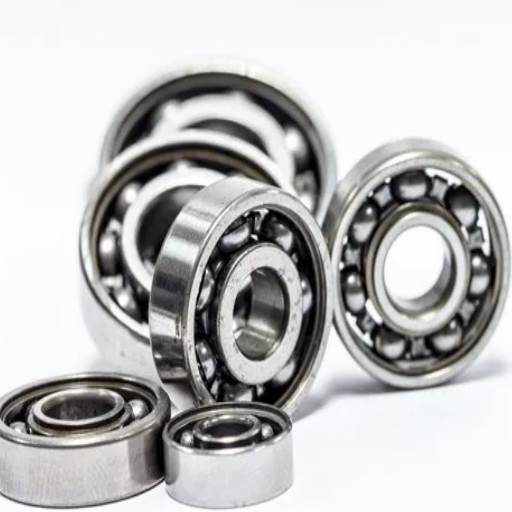
How do environmental factors contribute to bearing corrosion?
The environmental elements greatly assist in bearing corrosion erosion over time. Corrosion starts, for example, when bearings are subjected to moisture in the form of water or vapor combined with molecular oxygen. These factors cause oxidative damage on the surface of metals, forming rust and weakening bearing materials. Over time, moisture and humidity become more corrosive than oxygen. For instance, when relative humidity rises, let’s say to 60%, the danger of corrosion becomes majorly concerning, especially in bearings made of high-carbon or chromium steel alloy. This phenomenon is due to the propensity to oxidize these materials in situations of constant moisture. While proper sealing and careful packaging can lessen this exposure, when these measures are not adhered to, destruction tends to occur.
Another noteworthy environmental factor derives from exposure to contaminants such as road salt, industrial chemicals, or fine particulates. Notably, salt has been shown to induce corrosion due to electrochemical processes taking place. Salt acts as an electrolyte and, therefore, creates favorable conditions for metal ion migration, which further accelerates corroding the material.Bore and radial bearings operating under such aggressive environments need to be provided with better seals and have their surfaces coated with anti-corrosion finishes that protect against salt and other aggressive chemicals.
Another critical factor regarding the corrosion of bearings is the temperature variation. When the temperature is low enough to reach the dew point, condensation forms on bearing surfaces and leaves a thin layer of moisture. This vapor condensation and evaporation cycle tends to be acute in insufficiently sealed bearings, especially in areas with high diurnal temperature variation. Surface oxidation due to condensation is accelerated in bearings that are repeatedly exposed to elevated temperatures over long periods. Bearings designed for such circumstances are best lubricated using grease with embedded corrosion inhibitors, while reducing temperature using controlled ventilation or insulating materials are effective at mitigating condensation.
Finally, industrial situations where gases like sulfur dioxide or nitrogen oxides are present add another mechanism of corrosion. The combination of these gases with water can result in the formation of moist acidic compounds that are very corrosive to metals. These acidic components attack the surfaces, causing nonuniform corrosion and loss of material, which diminishes the bearing’s ability to carry loads. In cases where the atmosphere is chemically aggressive, bearings made of austenitic stainless steel or with protective zinc or nickel coatings perform very well. If these environmental factors are considered, bearings can be well protected against failures for a long duration.
What are the signs of corrosion-induced wheel bearing failure?
Bearing failure as a result of corrosion is one of the major issues that renders a vehicle unsafe and significantly disrupts its functionality. Most symptomatic is a humming or grinding noise that can be linked to a malfunctioning wheel bearing. Corrosion wears it down and makes it give off noises as it rotates. Internal workings of the bearing rubs on rough patches which leads to increased vibration and friction. These sounds can be aggravated during cornering or when the weight of the vehicle shifts as the stressed bearing gets more load.
Another observable feature is excessive play or looser-than-normal wheel fittings, which points toward bearing corrosion. Deterioration of the meticulously machined surfaces leads to loss of bearing rigidity, which offers a wobbling movement around the axis of rotation of the wheel. Additionally, this structural weakness is permeable to even lower levels of handling, which will result in defective alignment, uneven wearing of tires, and loss of better control of the vehicle, especially at increased speeds. Unmonitored wear will eventually lead to overwhelming damage to the vehicle’s axles and even the suspension system.
The temperature variation around the wheel hub is another important sign of overheating due to corrosion. Corroded bearings produce too much friction due to excessive surface wear, causing heat to be generated in the bearing. Heating above 120 degrees centigrade is very problematic because it and its resultant temperature can impair lubrication to the point where it will result in a dry bearing. In a situation with insufficient lubricant oil, the damage would soon become severe and pose an imminent failure risk.
Finally, inspection may identify redness or material loss along the bearing seals. Moisture and debris will enter the bearing assembly if the seal is breached by corrosion because such contaminants are allowed during the period of damage. This, from the outset, creates cycles of damage. The presence of red-brown oxidation or pitting marks during scheduled maintenance inspection is suggestive of corrosion damage. At this point, the bearings usually need to be replaced to restore the art’s function and mitigate further functional degradation. Remaining cognizant of these indicators will enable you pto reemptively fight against corrosion-driven failures and retain the reliability of the vehicle.
How does excessive heat affect wheel bearing performance?
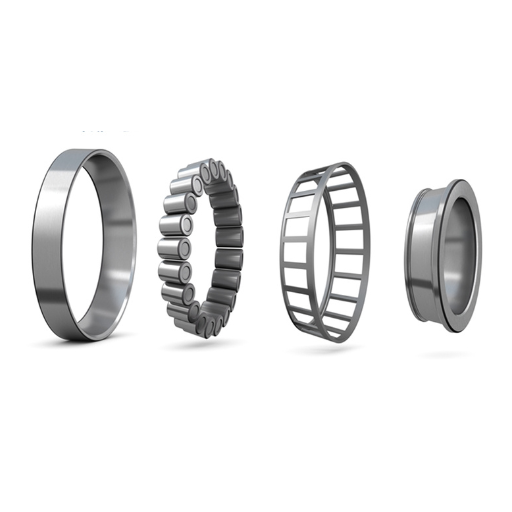
What causes overheating in wheel bearings?
Wheel bearing overheating is often attributed to excess friction, which, in turn, can arise from minimal lubrication. With insufficient lubricant or the application of the incorrect type of lubricant, the metallic components within the bearing assembly move past one another, leading to much frictional heat. For instance, the majority of bearings work appropriately when they are treated with grease, which can preserve viscosity up to 120°C (248°F). An extended use of high load can break down the grease, which can result in a dry bearing state with a rapid buildup of heat. Frequently monitoring lubrication levels and applying the correct grease can mitigate this.
Improper attachment alignment of the wheel bearings significantly contributes to overheating. To centric clearances must be firmly positioned to allow the bearing to be functional. In the case that the bearings are tightened too much, internal clearance is reduced leading to the creation of excessive torque friction and consequently overheating. Overly loose installations also contribute by causing domination of unbalanced forces leading to torque overheating. The normal functioning of most bearings is dependent on pre-defined quantities of radial and axial forces.
Another critical consideration is contamination throughout the bearing assembly and its components. Abrasive substances like dirt, water, and other contaminants can penetrate through the damaged seals and wear the surfaces of the bearings. Furthermore, contaminants can also cause severe lubricative issues as well as increase frictional heat. This is primarily due to the mix of lubricant and contaminant. Worn and improperly fitted seals certainly do not help as they guarantee little protection to the interior of the bearing. Longitudinally, inspecting seals to gauge their integrity and the bearing housing for contamination is the simplest way to maintain function while preventing overheating.
Lastly, the most critical and prevalent cause of overheating is the excessive overload beyond what the design of the bearing can accommodate. Bearings are constrained by the static and dynamic loads during the conditions of use. As an example, extreme overloading or forces due to impact from potholes or curbs can lead to the distorting and stressing of internal components due to the heat generated. Extreme loads can also squeeze the lubrication film, resulting in metal-to-metal crashing contact. To prevent this problem from occurring, it is fundamental to stick to the load limits by the manufacturer’s outline. Adhering to these suggestions will enhance the reliability and durability of wheel bearings.
How does thermal stress lead to bearing material breakdown?
As a result of internal structural and dimensional changes, thermal stress can cause bearing material to deteriorate. Extreme and fluctuating temperatures used on bearings cause the material to expand and convect. Over an extended timeframe, the thermal cycling generates internal stress, which causes the material’s microstructure to weaken, resulting in cracks or fractures. A standard bearing typically functions within the parameters of a specified temperature range, normally between -40 degrees Celsius (-40 degrees Fahrenheit) and 150 degrees Celsius (302 degrees Fahrenheit), based upon the material and application. Frequent changes to these limits will increase the chances of exceeding and fluctuation, causing thermal stress, fatigue, and material failure.
Steel alloy bearers are primarily fabricated with heat treatment to maintain strength and wear resistance. However, the material becomes tempered above a temperature of 200 degrees Celsius (392 degrees Fahrenheit), causing a loss of hardness and its ability to sustain load and friction. High load and high-speed conditions soften the bearing’s performance, causing it to be prone to surface wear, spalling, or deformation. This effect can be countered by employing high-temperature resistant alloys or ensuring sufficient cooling mechanisms during operation.
Combustion strain may also impact the lubricant and cause breakdown through indirect means. Insufficient lubrication was provided between rolling elements due to high-temperature oxidation and evaporation of the lubricant. This caused metal-to-metal contact, surface scoring, and an increase in heat, which established a self-fulfilling prophecy toward the accelerated depletion process. It is essential to utilize high-viscosity-index thermal stabilizers for lubricants in regions where drastic temperature changes exist. It is also very important to continuously monitor operational temperatures as well as the quantity of lubricant in use to maintain robust performance.
At last, the inner and outer races of a hydraulic bearing can `differentiate’ thermally, which ultimately leads to differential thermal expansion. Weakening of floors due to elements coupled with strain from surging preload foils mounted within the bearings due to having bore clearances, increased surface finish quality, and rubbing that takes place at different rates, led to accelerated cracking of the elastomer materials. Along with designing for a positive temperature coefficient of thermal expansion, providing bearings made of materials that possess matching thermal expansion coefficients is a good way to deal with these issues.
What role does normal wear and tear play in bearing failure?
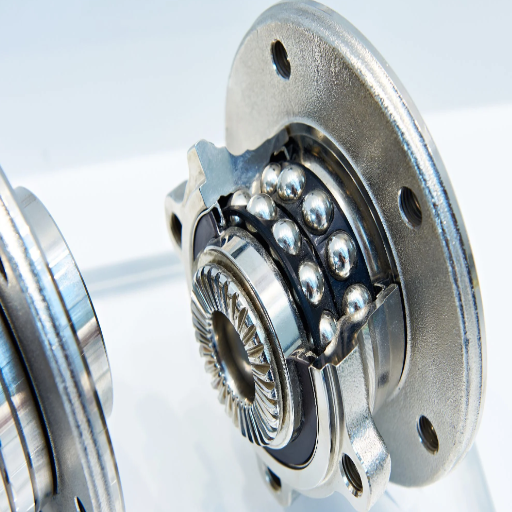
How long do typical wheel bearings last under normal conditions?
Under optimal circumstances, most wheel bearings are crafted to potentially endure anywhere within the range of 85,000 to 100,000 miles. This estimate considers that the bearings are functioning within their set conditions, such as adequate load limits, lubrication, and installation. The strength of bearings is largely dependent on the materials used, and modern-day bearings are made of high-grade steel alloys that do not erode over time or bear substantial stress as long as they are not damaged externally or contaminated internally.
One such substantial reason that impacts bearing life is lubrication. To friction drive and avoid overheating within any mechanism, bearings require exact lubrication. If the grease employed is capable of giving stability between temperatures of -40°C (-40°F) to 120°C (248°F), as many operational environments specify, the chances of premature failure are very low. Extended wear or external contamination will result in lubrication breakdown and drastically impact the lifespan of the bearing. To increase bearing life, regular checkups to ensure proper lubrication amounts and cleanliness are critically essential.
Most bearings are designed to accommodate a certain dynamic and static load, and if driven under harsh conditions, they may suffer from fatigue or stress. Conditions such as prolonged vibrations, potholes, or water exposure may cause misalignment and contamination, which accelerates deterioration. Preventative drive, such as loading the required ratings or refraining from extreme driving conditions, can increase the bearing’s operational life significantly.
Bearing lifespan individual maximums vary around these values on a case-by-case basis. As much as I would like to quantify the life expectancy of ZF bearings, in most cases, the 85,000 to 100,000-mile mark serves as a good estimate. Bad driving habits, outside weather, and lack of proper maintenance are factors that can easily influence this bearing life. Regularly checking for signs of loosening, abnormal sounds, or undue wearing makes sure failure of any kind is avoided. Routine inspection and maintenance with a focus on lubrication will ensure life expectancy is met and, in some scenarios, even exceeded when operational conditions are stable.
What are the signs of natural wheel bearing wear?
Inadequate wheel bearing function manifests as a symptom and, in most usages, is progressive. With time, subtle noise symptoms such as a low hum or a faint growl gradually convert to a noticeable rumbling, making their presence felt as the vehicle accelerates. Typical normal noise arises from friction between the different parts that constitute the bearing. Noting the sound change brought about by the cornering or stopping can enable detection of bearing failure.
Due to being a result of bearing wear failure, another noteworthy sign that comes hand in hand is the increase in roughness or vibration that is detected by the steering wheel or suspension system. While rotational motion is carried out flawlessly and perfectly in alignment when experienced loads are applied, with wear over time, there is a notable imbalance in rotation, which then results in undesired vibrations that ultimately lead to wear and tear of the vehicle’s suspension system.
One of the indicators of natural bearing wear is the presence of looseness or “play” in the wheel assembly. Bearings experience a gradual tightening over time because of normal rolling contact; it is also a given that fatigue over time will reduce the material within the bearings and thus wear them down over time.
If done regularly, the inspection of bearings and tires will reveal the relationship of wear and tear and mechanical failure. Keeping an eye on these factors along with the timely replacement or maintenance actions provides the opportunity to operate the vehicle safely while limiting the chances of harsh bearing damage as well as prolonging service life.
How can poor road conditions contribute to wheel bearing failure?
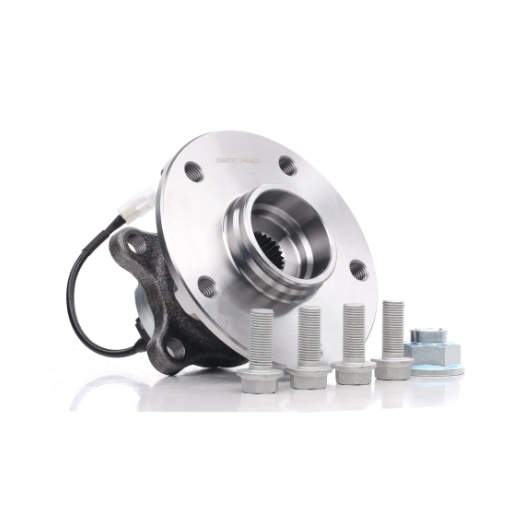
What impact do potholes have on wheel bearing longevity?
Potholes can apply an unexpected strain that can greatly reduce the life of wheel bearings. The shock load that is released after a vehicle goes over a pothole at high speeds exceeds the bearing’s operational limits. Potholes can provide an excess of dynamic load, which can exceed the tolerances of the wheel bearings and inflict progressive or instantaneous damage. Take, for example, the shock that a typical automotive bearing goes through while driving. A typical bearing’s dynamic load rating is somewhere from 2000 to 5000 pounds, but a pothole shock can create forces that can exceed that, which leads to deforming the rolling element or the raceways.
Pothole impacts introduce microcracks in addition to the surface fatigue that has already worn down the bearing structure. Surface cracks evolve from rolling elements at the axis of the raceway, which receive an extremely high amount of stress. Since the stress of those impacts is repeated over time, it leads to damage like spalling or abnormal wear. All high-stress impacts can lead to noise and vibration, which can be interpreted as the bearings losing their precision, which then leads to severe failure.
Potholes can also result in a lack of conformity or even a shift within the wheel parts, otherwise known as the wheel assembly. When a pothole is hit, the components associated with the bearing, like the hub or suspension system, often experience thrust or rotational shift of the components relative to the axis; this is known as axial or radial displacement within the wheel assembly. This displacement internally increases friction and steam of the wear and tear of the bearing as a whole.
Regular maintenance practices and moderation of driving, especially, can help lower the impact on wheel bearings. Abrupt hitting of a pothole when the vehicle is in high speed, tire pressure, and heavy strikes that lead to misalignment are things when carefully observed can make sure that the bearing is not damaged further. Routine checks for damage or over-abuse of movement of the wheel assembly bring to light these early wear and tear before they result in complete malfunction. Not only does fixing pothole damage ensure vehicle reliability, but it also ultimately protects and prolongs stomped wheel bearing wear.
How does driving on rough terrain affect bearing performance?
Driving on rough surfaces affects the functionality of the bearings because of the mechanical stresses and environmental conditions that need to be overcome. Bearings are highly machined parts that are highly dependent on loading and alignment control, plus lubrication for their proper functioning. The rough terrain encountered while driving on uneven surfaces like rocks, ruts, and potholes, results in a combination of higher dynamic loads, shock impacts, and vibrations.
The degradation of bearing functionality is particularly severe in rough terrains due to the ingress of contaminants such as dirt, grit, water, and mud. Bearings rely upon high-grade lubricants to minimize internal friction and guard the exposed surfaces. Once in motion, these foreign particles immerse themselves into the lubricant film and cause an increase in abrasive friction and wear. This can lead to surface anomalies such as spalling or pitting over prolonged usage. Such wear and tear to the bearing’s operating surfaces negatively affects their efficiency and increases vibration and noise in the wheel assembly.
Bearing vertical misalignment and fatigue is also aggravated in rough terrain by the vibration and jolting. Bearings are made to tight parameters, often in microns, so that loads for each of the rolling elements are evenly allocated. These precise tolerances can be altered by external forces, in which case loading and wear distribution become uneven. Impact misalignment can also alter bearing preemove, which, in turn, leads to problems associated with increased frictional torque, heat production, shortened lifetime, and degraded performance.
To reduce the potential effect of rough terrain, there are proactive measures that can be adopted. Bearings and their parts like seals, lubricating systems, and other components should be regularly inspected and maintained to lessen the deterioration. The use of efficient contamination-resistant lubricants specially designed for rugged conditions would also protect the bearings. Also, appropriate installation and alignment, along with moderate speeds over particularly rough portions, help preserve the bearings.
What preventive measures can extend wheel bearing life?
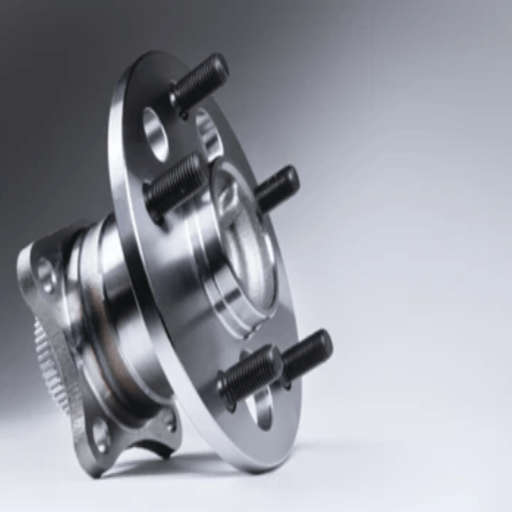
How often should wheel bearings be checked and maintained?
In cases of heavy duty or off-road vehicles that work under strenuous conditions, such checks may be more frequently needed because of greater strain and contaminant exposure. There are also manufacturers who check the wheel bearings as part of the overall maintenance schedule which in most cases, help avoid problems which may lead to greater issues later.
While carrying out such checks, one must be cautious in hearing for signs of excessive looseness that can be accompanied by sound (humming or grinding), as well as looking for any signs of rust. Wheel bearings are considered to be precision parts as they are built to close tolerances, which are sometimes micrometers. A sign of too much slack or offset alignment, even over small distances, indicates the presence of possibly overrunning wear and tear, which warrants remedy or resolution. Also, the seals that protect the bearing need to be checked as seal failure is one of the main ways for dirt, water, and other unwanted materials or substances – known as contaminants – to enter. Once grease contamination happens, the lubricant within the bearing will begin to circulate, negatively impacting the friction and the overall acceleration of the device.
Prioritize repacking and re-lubricating bearings with bearing grease during regular cleanings. Unlike older wheel bearings, most modern sealed wheel bearings are factory pre-lubricated and do not require re-lubrication; however, serviceable sealed wheel bearings still require a periodic cleaning and repacking with fresh grease, usually done during suspension or brake checks. Using high-quality grease with the right specification, which is often used for high pressure and temperature scenarios, os can greatly enhance the performance and durability of the bearings.
Additionally avoiding forceful movements and maintaining even tire pressure and alignment help extend the life of the wheel bearings. Having good maintenance and inspection habits significantly reduces wear and tear on the bearings and prolongs the overall lifespan of your vehicle.
What are the benefits of using high-quality wheel bearings?
The use of high-quality wheel bearings brings a host of rewards, whether it is performance or durability. Improvements in durability as a primary benefit. High quality bearings are constructed using premium grade materials like high carbon or chromium steel which are more fatigue and wear resistant.
Another major benefit is operational efficiency. High quality wheel bearings are designed with tighter tolerances, often within micrometer scales, which improve aligned conformance and lessen the rotational friction. This enhanced engineering reduces the energy losses and heat produced from rotation, improving fuel efficiency. Furthermore, better design precision improves noise and vibration, leading to quieter and smoother vehicles.
The quality of bearings profoundly affects the protection they offer from external environmental variables. Such high-quality bearings are precision-built with advanced sealing features that ward off the entry of contaminants like dirt, water, and debris into the bearing assembly. These seals are crucial in averting overheating and abrasive wear by safeguarding the lubricant’s integrity over time. Less costly bearings suffer the insertion of seals that are far less efficient in containing leaks, resulting in more frequent required maintenance as well as faster degradation.
Furthermore, using high-quality wheel bearings decreases the long-term maintainance cost.Premium bearings are designed with utmost care to provide reliability which helps in having optimized performance and enhanced safety for the vehicle and occupants. By opting for high-quality parts, you put yourself in a place where you ensure the protection of vital components whilst optimizing the overall performance of the vehicle.
Frequently Asked Questions (FAQs)
Q: What are the common reasons for wheel bearing failure?
A: The most common reasons why bearings fail include improper lubrication, overload, misalignment, contamination, and improper installation. These factors can cause damage to the bearing components, leading to premature failure and the need to replace the hub or entire wheel end assembly.
Q: How does lubrication failure affect wheel bearings?
A: Lubrication failure is one of the primary reasons why bearings fail. Insufficient or contaminated lubricant can cause excessive friction, heat buildup, and wear on the bearing components. This can lead to spalling, where small pieces of metal break off from the bearing race, causing noise and ultimately bearing failure.
Q: What are the signs of bad wheel bearings?
A: Signs of bad wheel bearings include unusual noises (such as grinding, humming, or rumbling), vibrations felt through the steering wheel or floorboard, and uneven tire wear. You may also notice that the wheel feels loose or that there’s a pulling sensation when driving. If you experience any of these symptoms, it’s important to have your wheel bearings checked by a professional.
Q: How can excessive loads cause wheel bearing failure?
A: Excessive loads or overloading can put too much stress on the bearings, causing them to wear out prematurely. Heavy loads beyond the vehicle’s rated capacity can cause a bearing to fail due to increased friction and heat. It’s crucial to adhere to the vehicle’s weight limits and distribute loads evenly to prevent wheel bearing failure.
Q: What role does improper installation play in bearing failure?
A: Improper installation is a significant cause of premature bearing failure. If bearings are installed with incorrect preload, misalignment, or using improper tools, it can lead to uneven load distribution and accelerated wear. Always ensure that new bearings are installed by qualified professionals using the correct procedures and tools.
Q: How does contamination affect wheel bearings?
A: Contamination can cause severe damage to wheel bearings. When dirt, water, or other debris enter the bearing assembly, it can cause corrosion, abrasion, and interfere with proper lubrication. This can lead to increased friction, heat, and ultimately bearing failure. Regular maintenance and proper sealing can help prevent contamination-related issues.
Q: What impact does misalignment have on wheel bearings?
A: Misalignment of wheel bearings can cause uneven load distribution and increased stress on the bearings. This can lead to premature wear, increased friction, and eventual failure. Proper alignment during installation and regular wheel alignment checks are essential to prevent this issue and extend the life of your wheel bearings.
Q: How often should wheel bearings be checked or replaced?
A: The frequency of wheel bearing checks depends on your vehicle’s make, model, and usage. Generally, it’s recommended to have your wheel bearings checked during regular maintenance intervals, typically every 25,000 to 30,000 miles. However, if you notice any unusual noises or vibrations, it’s important to have them inspected immediately. Replacement intervals vary, but many wheel bearings last between 85,000 to 100,000 miles under normal conditions.
UCTH213-40J-300 with Setscrew(inch)
CNSORDERNO: Normal-duty(2)
TOGN: UCTH213-40J-300
SDI: B-R1/8
SD: 2 1/2
UCTH212-39J-300 with Setscrew(inch)
CNSORDERNO: Normal-duty(2)
TOGN: UCTH212-39J-300
SDI: B-R1/8
SD: 2 7/16
UCTH212-38J-300 with Setscrew(inch)
CNSORDERNO: Normal-duty(2)
TOGN: UCTH212-38J-300
SDI: B-R1/8
SD: 2 3/8
UCTH212-36J-300 with Setscrew(inch)
CNSORDERNO: Normal-duty(2)
TOGN: UCTH212-36J-300
SDI: B-R1/8
SD: 2 1/4
UCTH211-35J-300 with Setscrew(inch)
CNSORDERNO: Normal-duty(2)
TOGN: UCTH211-35J-300
SDI: B-R1/8
SD: 2 3/16
UCTH211-34J-300 with Setscrew(inch)
CNSORDERNO: Normal-duty(2)
TOGN: UCTH211-34J-300
SDI: B-R1/8
SD: 2 1/8









